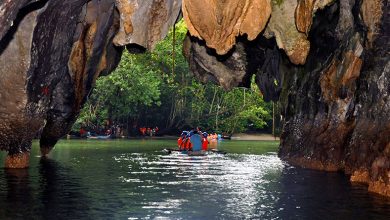Fauna
From the zoological point of view most of the Philippines belong to the Malaysian sub-region. On a number of islands (Palawan, the Sulu archipelago, Mindanao), however, the fauna shows affinities with that of Borneo, from which it seems to have come during the Pleistocene. On the other hand, the species in the northern part of the archipelago are identical with those in Formosa and East Asia. In addition many species of birds migrate from the mainland Asia to the Philippines during winter.
On most of the larger islands the fauna has been considerably impoverished by centuries of hunting and forest clearance and more recently by urban development and the population explosion. Large animals are now rare, and the wild species are confined to the forested and thinly populated mountainous regions where the biotope remains intact. However, since 1969 the government has been operating a plan for safeguarding the most threatened species and has established national parks (57) and reserves.
Among the mammals of the Philippines are deer including the sambar, a large dark brown Asian deer; the tamaraws (Bubalus mindorensis) of Mindoro, a species of wild buffalo that resembles the domestic carabao of the paddy-fields; wild boars; the mouse deer (Tragulus nigricans), now almost entirely confined to the island of Balabac off Palawan; and some species of wild cats or civets like the palm cat (Paradoxurus); the monkeys, formerly very common are now represented mainly by the macaques (Macaca fascicularis); and tarsiers (Tarsius syrichta) found in the forests of Bohol, Leyte, Samar and Mindanao. There are also numerous numbers of bats including the Philippine Nectar Bat (Eonycteris robusta) which is endemic in the archipelago; the flying foxes particularly the “Golden Crown Flying Fox” (Acerodon jubatus) the largest bat in the world; and the strange colugo or flying lemur (Cynocephalus volans).
Reptiles and amphibians show a considerable decline in numbers. At present there are only 70 to 80 species of amphibians and 240 to 250 species of reptiles. Alligators and crocodiles were formerly found all over the islands, are now practically confined to a few areas of Mindanao. There are still many species of snakes, though the visitor will rarely encounter them. There are redoubtable species of cobra (Naja), vipers (Trimeresurus), huge reticulated pythons and other boas, and the sea snakes (Hydrophis semperi) which have adapted to the fresh water of Taal Lake.
There are more than 900 species of birds found in the archipelago, of varied size, colour and habitat. Some species are threatened, like the monkey-eating eagle (Pithecophaga jefferyi), which can be found only in the wilds of Davao, Samar and Quezon, the tipol or Sarus crane (Grus antigone sharpei), a large bird more than a metre high which lives in the swamps of Luzon; and the tabon bird (Megapodius cumingi) a white breasted sea eagle which are found in Palawan. The Calayan Rail (Gallirallus calayanensis) a new bird species that has been discovered on the remote island of Calayan, north of Luzon. Of common occurrence in the forests are cockatoos, parrots, calaos, woodpeckers, jungle fowl and smaller birds like humming birds. A large numbers of water birds can be found; among them are snipe, herons, lapwings, turnstones, kingfishers and ducks. The Callao caves in the Cagayan valley provide nesting places for thousands of birds, which every morning at sunrise emerge from the cool darkness of the caves in a great swirl of wings and scatter over the countryside, returning to their rocky fastnesses at nightfall.
The Philippines also have a rich and varied marine fauna. Some 2400 species of fish have been recorded, including the famous lapu-lapu, a kind grouper, tilapia, and milk fish. Corals and shellfish, although threatened by pollution and intense commercial exploitation, are still found in large numbers (about 20,000 shell varieties) in the central Visayas (Panay, Cebu, Bohol), around Zamboanga and the Sulu archipelago. Collectors will find numerous kinds of murex, including some rare species like the nail-shell (Murex elongatus) and the wheel-shell (Murex rota Sowerby); volutes, like Aulica vespertilio, the bat-shell, Aulica aulica and Aulica imperialis; cerithiums; cone-shells, including the noble cone-shell (Conus nobilis L.) and Bough s cone-shell (Conus thalassiarchus Sowerby); helmet shells (Cassis), tibias, nautiluses, etc.
Mention should also be made of a tiny fresh-water fish only 4 millimetres long, the tabios or sinarapan, which is found in Lake Buhi, in the Bicol region (south-eastern Luzon). Truly, the archipelago can be considered as a center for biodiversity with exceptionally high level of endemism.




